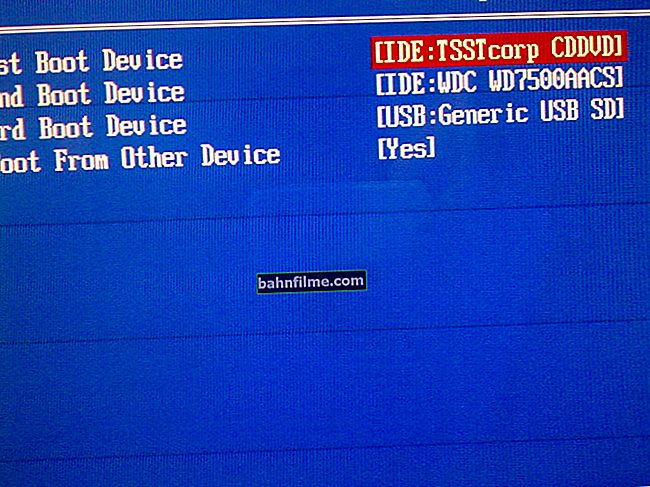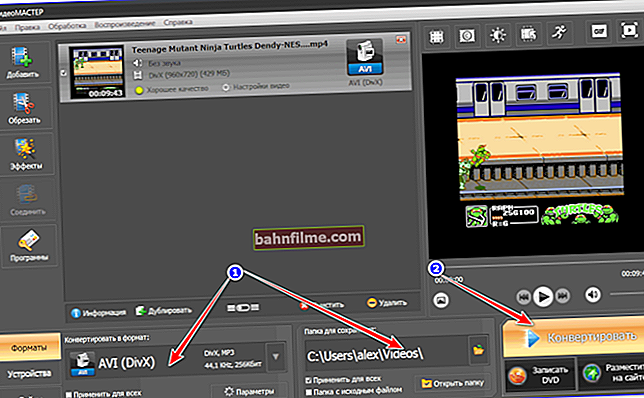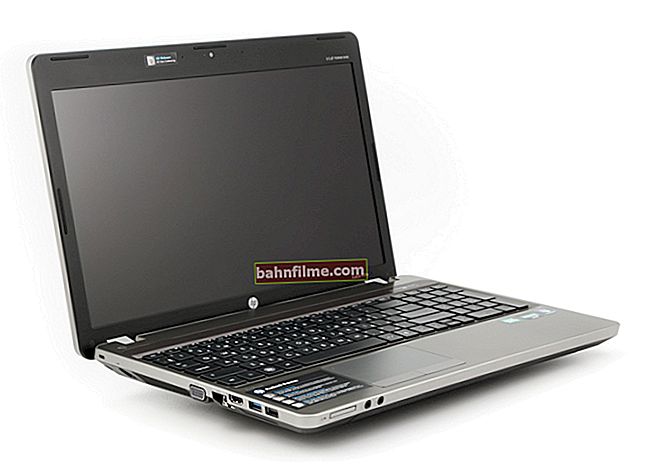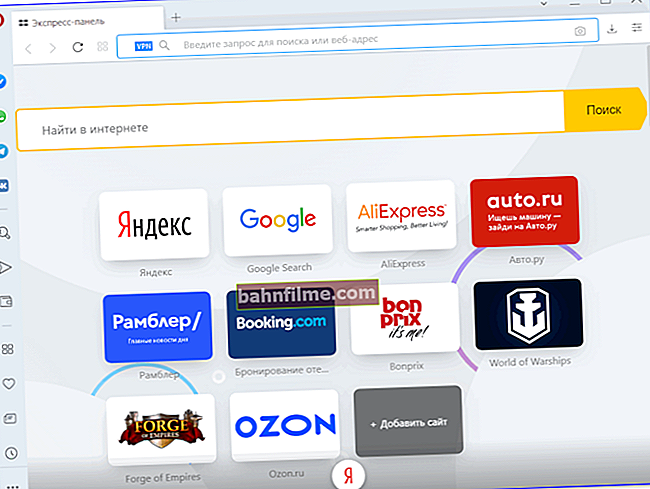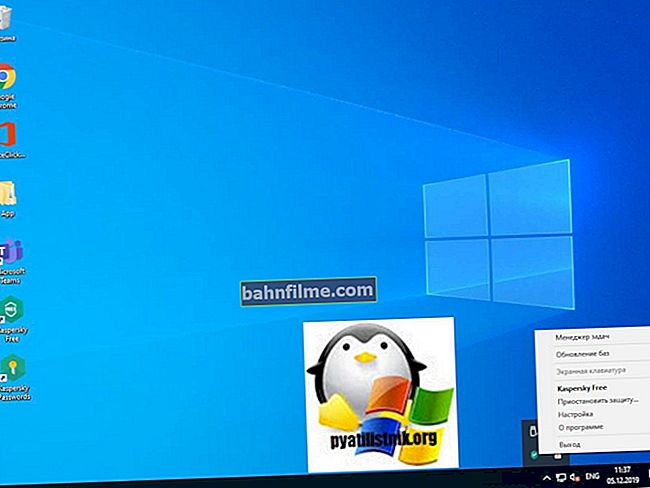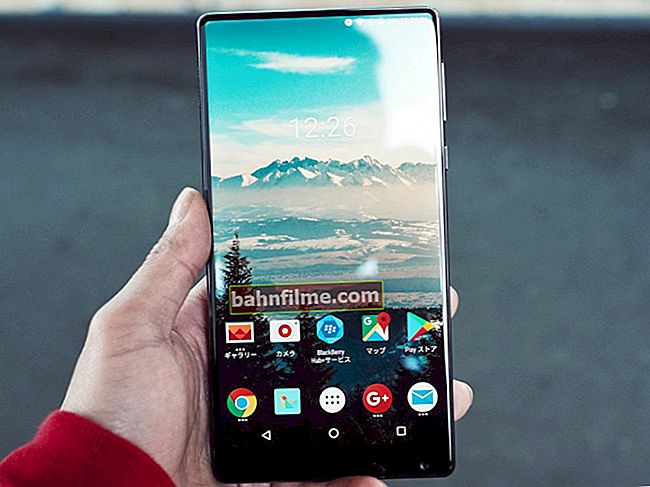 Good time!
Good time!
Russia is a big country, and the problem of communication between different parts of our country has always been relevant. With the development of Internet technologies, this problem is partially solved, however, even here everything is far from simple ...
In this article, I decided to look at various ways to connect to the Internet. I do not intend to tell you all the subtleties of each option. Perhaps the mission of this article is different - to acquaint you with different options and methods of connection, perhaps to suggest an idea to look for something better ...
It's just that at one time I was very surprised how people still manage to "sit" on a Dial-Up connection, when providers with a "dedicated line" (Ethernet) have already come to our city for a couple of years. It turns out that many simply did not yet know that it is possible to connect to this Internet provider for almost free and get speeds ten times higher!
And so, I finish the memories, and move on to the topic ...
*
How to connect to the Internet. Pros / cons of different ways
Dial-up connection (ADSL or Dial-Up)
The most common type of internet connection. There is a regular telephone line everywhere - in almost every locality (thanks to the country of the Soviets for electrification and telephony).
Dial-Up
In parallel, a modem is connected to your telephone set (to the telephone line) (like a second telephone). Further, operators usually have special numbers by which you can get access to the Internet (by dialing them from a modem, of course).
In general, I will note that this method is gradually "dying out" and disappearing into oblivion: in our country, after all, a program has been adopted for the development and laying of a network even in remote areas.

Dial-Up - an approximate connection diagram
Pros:
- high availability (you can connect to the Internet even in many remote villages of our country);
- low cost of equipment (you only need a modem, which can be found in Chinese stores for less than 100 rubles!).
- You can connect on your own: just buy a modem, connect it to a telephone line and set up a connection on a PC.
Minuses:
- very low speed (up to 56/128 kbps). Enough is only for viewing pages (you can not dream of downloading files);
- high price;
- low connection stability: the connection often breaks;
- the phone will be busy (when accessing the Internet).
Addition!

You may find useful an article on how to transfer Mbps to MB / s (or why I connected to the Internet at a rate of 100 Mbps, and download only 10 MB / s) - //ocomp.info/skolko-megabit-v -megabayte.html
ADSL
This method also uses a telephone line, but has a significant advantage: the phone will not be busy while working with the Internet, and it provides much higher speed (up to 8 Mbps).

ADSL - approximate connection diagram
Among the minuses: more expensive equipment cost (than with a Dial-Up connection), and the impossibility (in most cases) to set up a connection on your own without the specialists of the operator to which you are going to connect.
Dedicated line (Ethernet, GPON, DOCSIS)
Ethernet / GPON
The most common type of Internet connection in all major cities. A cable is laid to your apartment (like a television cable, only it has more veins), which is connected either directly to the network card of a computer / laptop, or to a Wi-Fi router (to create a wireless network in the apartment).

An approximate connection diagram (there may not be a router - then the Ethernet cable is connected directly to the PC's network card)
Pros:
- high data transfer rate (up to 100 Mbps with Ethernet, and up to 1 Gbps with GPON connection (fiber)). By the way, there is another popular type of FTTB connection - this is "optics" stretched to your house (but not to your apartment!);
- low cost of services (unlimited connection will cost only a few hundred rubles per month);
- stable and high-quality connection, with low ping, which is very important for game lovers (one of the most stable today);
- practically nothing needs to be bought: there is a network card in every modern PC (and the company's Wi-Fi router is often provided for free ...).
Minuses:
- the need to lay a cable to an apartment / house;
- is available only in relatively large cities (moreover, if you have a new or remote area, it may well become that no operator has connected your home).
Over coaxial (TV) cable (DOCSIS)
This type of connection is not very common in our country. The connection to the Internet is carried out via a television cable (KTV), the speed is up to 42 Mbit / s (you must admit that not much, given modern realities).

Sample DOCSIS Connection Diagram
The principle is approximately the following: a special is connected to a television cable. cable modem - one output goes to the PC (Internet is distributed), the other to the TV. You can work with the Internet in parallel with watching TV programs (one does not interfere with the other!).
In general, this type of connection is more used in residential and remote areas, where there is simply no other choice (say, Ethernet). Well, or in those cases when you already use the services of KTV and there is no desire (opportunity) to lay another cable into the apartment (for example, it is unreasonably expensive).
Wireless and mobile Internet access (GPRS, EDGE, 3G / 4G, WiMax, etc.)
The most advanced and one of the most developing areas. I do not even presume to single out any of the connection types separately. Perhaps, you should focus on 3G / 4G. "it" is in every modern phone ...
In general, now any smartphone is able not only to access the Internet itself, but also to share (distribute) it to neighboring PCs / laptops / other smartphones. In many large cities, 3G / 4G coverage is the most widespread (4G provides speeds up to 100 Mbit / s and higher (in practice, the speed "dances" in different parts of the city, and it is good if it is 20-30 Mbit / s)).
To connect a computer to the Internet via a smartphone, it is enough: connect it to the USB port, and activate the modem mode on the smartphone (every modern device has one). You can also create a Wi-Fi network on your smartphone via modem mode and distribute the Internet using it (everyone who connects to it will also have access to the Internet). See screenshots below.

We connect the phone to the computer using a USB cable

Look at the corner of the phone screen (4G network has been found)

There is a modem mode in every modern smartphone
Addition!

Perhaps you need an instruction: how to distribute the Internet to a computer or laptop from Android - //ocomp.info/razdavat-internet-s-android.html
I note that modems (in the form of flash drives) are also popular now, which can be connected to any PC / laptop via a USB port. Provide a fairly good quality of communication.

Megaphone modem connected to laptop (not as an advertisement!)
Pros of mob. Internet:
- there is no need to buy anything in addition (if we do not take into account special modems);
- the Internet can be distributed very quickly for any device (including, even on the road or in nature);
- a sufficiently large coverage area (can be used in an area where there is nothing else);
- lately there are more and more unlimited tariffs.
Minuses:
- communication costs several times more than the same leased line;
- often high ping, which will not suit most fans of network games (in general, the quality of communication depends on the area and distance from the tower);
- not as fast as other connection types.
Satellite connection
This is not a very popular type of connection (very expensive), and is used only in remote parts of the country, where there is simply no other alternative. The access speed is highly dependent on the equipment that will be provided to you.One of the main disadvantages of this type of connection, which is worth noting, is the presence of a very high ping: at least 250 ms (this is a lot)!

Satellite Internet - an approximate scheme
Pros:
- the ability to install anywhere in the country;
- independence from terrestrial communication channels.
Minuses:
- very high ping (250 ms and higher) - it is almost impossible to play network games or talk over IP telephony;
- high cost of equipment and payment for services;
- the need to coordinate the installation of equipment (not always and not everywhere);
- bulky and complex equipment (do not install and configure yourself).
PS
It is possible that all this (what I wrote in this article) will soon not make any sense ... This is me about the words of Elon Musk, who promised that in a few years, he will cover the Earth with satellites and provide almost all inhabitants of the planet with free and fast Internet access! It's tempting!
However, personally, I believe that his words were not without advertising and pathos: maybe they will cover the Earth with satellites, but it will be in 15-20 years (minimum) ...
*
That's all for me. Good luck!
